Today Kelly and Daniel talk "I Want You" from Dylan's '66 masterpiece, Blonde on Blonde. They talk poetry, interpretation, and different theories about the song, Kelly also seeks a unified theory of "I Want You" that has nothing to do with Game of Thrones.
SHOW NOTES
“I Want You” was recorded on March 10, 1966 (from three am to seven am) and was the last song recorded for Blonde on Blonde. Al Kooper noted, “nobody has ever captured the sound of three a.m. better than that album. Nobody, even Sinatra, gets it as good.” Bob Dylan, of course, is on vocals, guitar and harmonica, Wayne Moss is on guitar, Joe South on guitar and bass, Kooper is on organ, Henry Strzelecki plays piano and Kenneth Buttrey helms the drums.
The song proved to be Kooper’s favorite song of the session and believes Dylan played it last just to bug him. And because Kooper knew the song, he was able to teach it to the musicians beforehand (which is a rarity in a Dylan studio session). In 1978, Dylan reflected on the record:
“I always hear other instruments, how they should sound. The closest I ever got to the sound I hear in my mind was on individual bands in the “Blonde on Blonde” album. It’s that thin, that wild mercury sound. It’s metallic and bright gold, with whatever that conjures up. That’s my particular sound. I haven’t been able to succeed in getting it all the time. Mostly I’ve been driving at a combination of guitar, harmonica and organ, but now I find myself going into territory that has more percussion in it and rhythms of the soul.”
Before they delved into the song, Kelly let Daniel in on the secrets of the chambermaids (6:30): Admonishing Daniel, Kelly explains that a “maid” is someone that cleans and a “chamber” means room. Daniel thought only of chamber pots and prostitutes, which could apply, as a bathroom is a room and sex work is a thing. The first appearance of a chambermaid is in 1548 but it’s really quite simple. Kelly delved into “lady in waiting,” part of a royal court, confidante of the queen, someone who would take care of her. She could also be taken by the king at any time, so that’s probably where Daniel is coming from. Famous chambermaids? No. But three poems emerged on them. The first two are from Yeats, “Chambermaid’s First Song” and “Chambermaid’s Second song.” Then some dirty ass poem from John Wilmot called “A Ramble in St. James Park.”
These Songs are not meant to be understood, you understand. They are only meant to terrify & comfort. – John Berryman
How do we tackle this song? (13:00) Lyrically? Do we assign definitions to the words? We as humans want things spelled out but good poetry, good songwriting will constantly grow with or without us.
Before we looked into some Theories from the Internet, Kelly presented (16:00) her unified theory of “I Want You” (which is definitely not inspired by the upcoming Season 7 premiere of Game of Thrones). Before that, just why did Kelly hate this song to begin with? “I thought it was the goofiest, dumbest shit I’d ever heard… [it feels like] a bad Sixties movie that’s just all fluff, no content, just two white people spinning around and grinning like idiots… and I don’t care.” In short, ““it sounds like a bad merry-go-round” and Dylan & The Dead certainly didn’t help prep for this. After listening to the rundown on TBLS Vol. 12: The Cutting Edge, pieces of the song started to come to life. Then, one last time, she listened and exclaimed, “Oh shit. I’ve unlocked the key!”
Bob Dylan is a murderous king. The barrage of images are seen through his eyes in the streets of a medieval city. There’s the guilty undertaker (guilty because Bob’s killing people), the organ grinder, the bells ringing for his victims. The scorn is being heaved toward him from the people – they know the score. Mother’s weep. Father’s mourn the insatiable appetite of the king. Open the gate, he’s coming home to his queen but only wants his chambermaid. Then, in the songs climatic finale, Bob murders the chambermaid’s son because he was real annoying with his dancing. All the “I Want You’s” throughout are seen through Bob’s murder face!
And it’s that desire to make connection that leads us into crazy spaces, even if, somehow, they’re all valid, if only to that person (20:45). For others, “I Want You” was an admission of a heroin addiction, a song about the sexual revolutions of the day, Vietnam. It was about Edie Sedgwick, Anita Pallenberg, Brian Jones and, somehow, Ted Kennedy and Chappaquiddick (predicted from the future). It was half-surmised and half-baked. It drew too heavily on what we know now but wouldn’t have been then.
That said, why do they bring all these up? Because Sign on the Window is all about this interpretation. Nothing is going to top the idea of Dylan sitting on a park bench in Episode 2, "I Wanna Be Your Lover," something of a cousin to “I Want You,” spinning yarn about people and images, cloaked behind metaphors and symbols that may only have meaning for him.
“I Want You” is poetry. It is literature. And to seek knowledge is human. We seek to recreate and interpret words and phrases to craft meaning. The more acquainted you are with a subject, the quicker your brain seeks to build these bridges. That is the beauty of poetry, literature, song, what have you: it is available but we must then interact with it to make it truly come to life. Edward Hirsch came close to this, in the same vein of what Kelly and Daniel discussed in Episode 6, Outlaw Blues (006), this idea of poetry/literature/song bridging that gap:
The poet is incited to create a work that can outdistance time and surmount distance, that can bridge the gulf — the chasm — between people otherwise unknown to each other. It can survive changes of language and in language, changes in social norms and customs, the ravages of history.
So what?, Daniel mused. “I Want You” is made up of characters, flashes, images – and they’re what you want them to be. He sees struggle inside of the (rare) chorus that creates and heightens any tension. In the end, he couldn’t imagine the track not being on Blonde on Blonde, one way or another.
MIXED UP CONFUSION
This week’s Mixed Up Confusion, we confessed, will essentially become a low-key Game of Thrones podcast, as if enough of those don’t already exist. Listen below.
THE EPISODE’S BOOKLET & PLAYLIST
RECOMMENDATIONS (29:10)
Kelly spent the week watching Top Chef and catching up with Game of Thrones and recommended niche artist Miles Davis and his classic, Birth of the Cool.
Daniel finished Netflix’s GLOW a week too late and recommended John Moreland’s newest Big Bad Luv (and, by extension, High on Tulsa Heat) and Bong Mountain’s You’re Doing Great (For the Record).
ENDINGS (33:33)
After a few show notes, we chose next week’s track at random. Between 1 and 522. Kelly guessed #201. It was #74. It could have been the delightful "It Take A Lot to Laugh, It Takes A Train to Cry." (“dude loves trains and bells” – Kelly) but instead… instead… is "Woogie Boogie" from Self Portrait, our second song from the album.
Next week: get your Boogie Woogie on Bugle Boy
Follow us wherever you listen to podcasts. See our real-time playlist See That My Playlist is Kept Clean on Spotify. Follow us intermittently on Twitter and Instagram.
Tell your friends about the show, rate and review wherever they let you, and consider supporting us by subscribing or at Patreon.







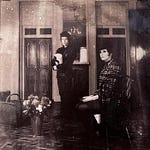
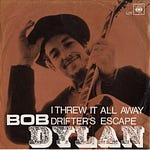
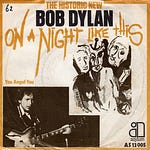

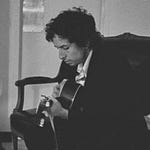
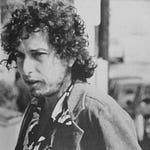

Share this post